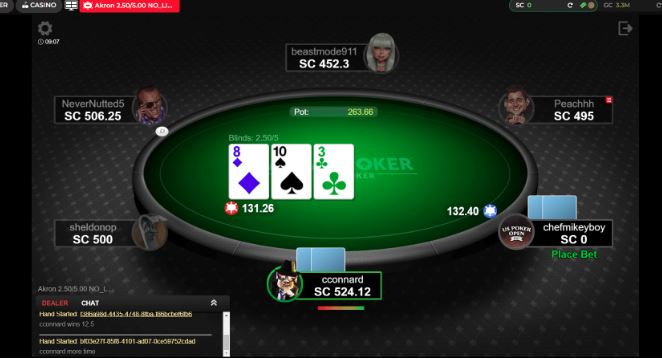Aggression plays a critical role in online poker, influencing how you approach the game and interact with your opponents. Understanding and leveraging aggression can significantly impact your success. Here’s an in-depth look at the role of aggression in online poker and how to use it effectively:
The Role of Aggression in Online Poker
1. Understanding Aggression
Definition: Aggression in poker refers to actively betting and raising rather than just calling or checking. It involves taking the initiative to control the pot and apply pressure on opponents.
Types of Aggression:
- Pre-Flop Aggression: Raising or re-raising before the flop to build the pot and gain positional advantage.
- Post-Flop Aggression: Continuation betting, raising, or bluffing after the flop to maintain control and force opponents to fold.
2. Benefits of Aggression
Building Pots: Aggressive play helps build the pot when you have a strong hand, increasing potential winnings.
Applying Pressure: By frequently betting and raising, you pressure opponents to make tough decisions. This can lead to mistakes or forced folds.
Controlling the Table: Aggression allows you to dictate the pace of the game and take control of the table dynamics. This often leads to favorable outcomes and puts opponents on the defensive.
Protecting Your Hand: Betting aggressively protects your hand from being outdrawn by discouraging opponents from seeing additional cards cheaply.
3. When to Use Aggression
Strong Hands: Use aggression when you have a strong hand to build the pot and extract value. This includes making larger bets and raises to capitalize on your advantage.
Bluffing: Aggression is essential in bluffing and semi-bluffing scenarios. By betting or raising, you can represent strong hands and force opponents to fold weaker holdings.
Position: Leverage your position to apply aggression effectively. In late position, you have more information about your opponents’ actions and can use this to apply pressure.
Table Dynamics: Adjust your level of aggression based on the table dynamics. If the table is passive, you can be more aggressive. Conversely, if the table is highly aggressive, be more selective with your aggressive plays.
4. Balancing Aggression
Avoid Over-Aggression: While aggression is powerful, overdoing it can lead to predictable play and increased risk. Balance your aggressive plays with passive ones to keep opponents guessing.
Adjust Based on Opponents: Consider the tendencies of your opponents when deciding how aggressive to be. Against tight players, aggression can force folds, while against loose players, you may need to adjust your approach.
Incorporate C-Bets Wisely: Continuation betting (C-betting) after the flop is a common aggressive move. Use C-bets strategically based on board texture and opponents’ tendencies.
5. Aggression and Risk Management
Risk vs. Reward: Evaluate the potential risks and rewards of aggressive plays. Ensure that the benefits of aggression outweigh the risks of potential losses.
Bankroll Management: Ensure your aggression is in line with your bankroll management strategy. Avoid making aggressive plays that could jeopardize your bankroll.
6. Developing an Aggressive Strategy
Practice Aggressive Play: Incorporate aggressive strategies into your practice sessions and review hands to understand the outcomes of your aggressive plays.
Study and Learn: Analyze the play of aggressive players and learn from their strategies. Study how they balance aggression and adapt to different situations.
Adjust and Evolve: Continuously adjust your level of aggression based on game dynamics, opponent behavior, and your own table image. Evolving your aggressive strategy keeps opponents on their toes.
7. Dealing with Aggression from Opponents
Stay Calm: Maintain composure when faced with aggressive opponents. Avoid reacting emotionally and make decisions based on strategy.
Use Re-Raises: When facing aggression, consider using re-raises (3-bets) to challenge opponents and take control of the hand.
Analyze Patterns: Observe the aggression patterns of your opponents and adjust your strategy accordingly. Exploit their tendencies to your advantage.
Conclusion
Aggression is a fundamental aspect of online poker that can lead to significant advantages when used effectively. By understanding the benefits of aggression, knowing when and how to apply it, balancing your approach, and managing risks, you can enhance your performance and improve your overall success. Continuously study and adapt your aggressive strategies to stay competitive and make the most of your aggressive plays.
